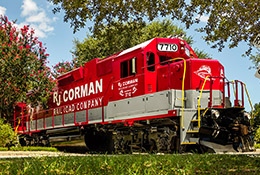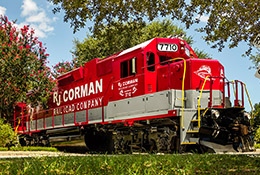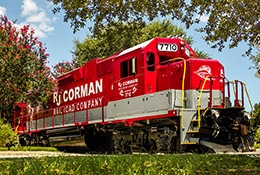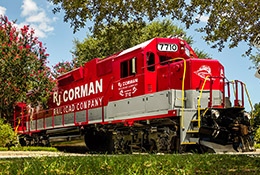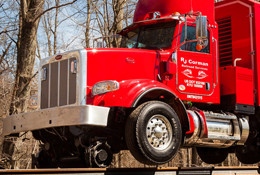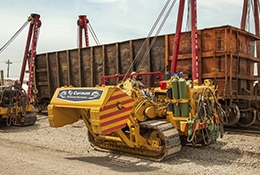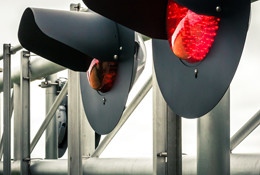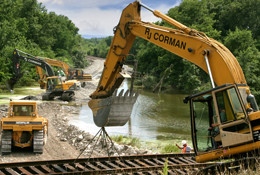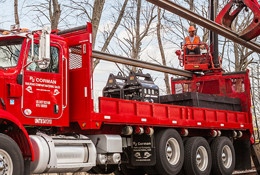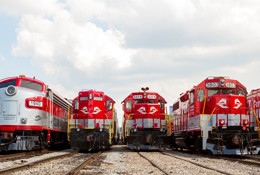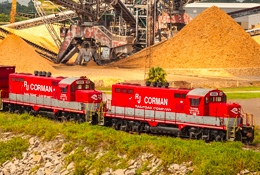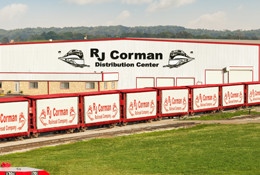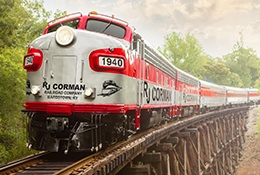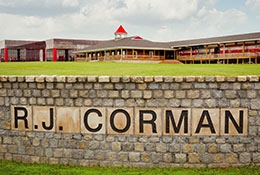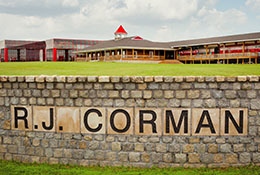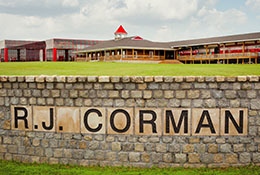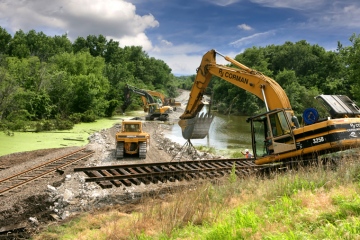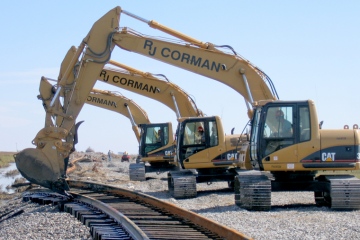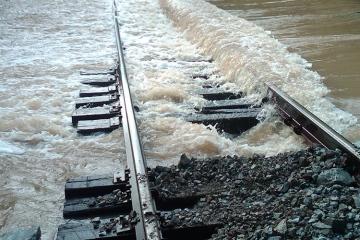October 20, 2008
R. J. Corman Storm Team: Crews Return To The Gulf After Hurricanes Gustav & Ike
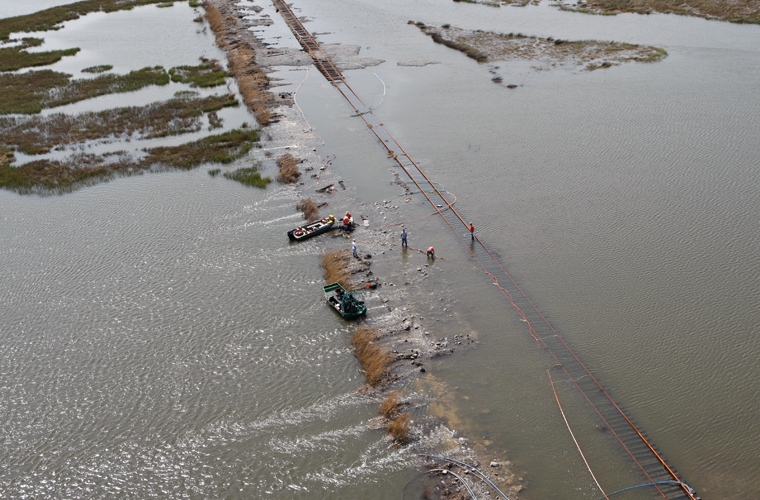
In August 2005, Hurricane Katrina hit the Gulf Coast as a Category 3 storm. At the time, Katrina was the most costly, as well as the fifth deadliest, hurricane in the history of the United States. The massive storm surge caused severe destruction along the Gulf Coast and decimated parts of southern Mississippi.
In response to Katrina, R. J. Corman’s Storm Team crews embarked on the largest scale clean up and reconstruction project to date. Crews of hundreds spent approximately six months removing debris, re-railing submerged cars, replacing washed out roadbeds and re-laying 40 miles of track for CSX. R. J. Corman’s speed and tremendous efforts during the Katrina clean up and rebuild did not go noticed. Three years later, R. J. Corman was called upon again to return to the Gulf to repair the damage left by the one-two punch from Hurricanes Gustav and Ike.
Storm Team projects require more than just equipment and man-power. They require logistics, infrastructure and countless hours of administrative and mechanical support. R. J. Corman set up a temporary shop facility set up close by. R. J. Corman’s full-service mechanical shop kept everything running smoothly and allowed for the company to use all of its resources. Crews were staged and everything was in place when Hurricane Gustav hit the coast of Mississippi as a strong Category 2 on September 1, 2008. Unlike Katrina, Gustav did not have the same devastating storm surge. However, it did damage some of the same track
R. J. Corman crews re-laid after Katrina.
Crews moved in immediately, but were soon evacuated because Hurricane Ike was projected to make landfall as a Category 3 hurricane or higher, but it shifted and made landfall on September 11, 2008 in Baytown, Texas as a Category 2 hurricane.
Yet, Hurricane Ike did leave its mark on the Mississippi Gulf Coast by further increasing the damage caused by Gustav. After two weeks and two hurricanes, crews finally began clearing debris. Then they rebuilt the road bed. Groups worked in tandem on each end of the 20-mile stretch working toward the middle. Operators had to offset the existing track to build the road bed back to grade then move the rail back into position. Once the road bed was rebuilt, R. J. Corman crews began realigning and repairing the rail. Crew members said the experience they gained from Hurricane Katrina project helped them with this clean-up.
Experience and quality work are not the only reasons the R. J. Corman Storm Team was called upon. Another was speed. By combining the efforts of skilled employees, crews are able to work more productively and efficiently. The “Corman Way” is another reason. It is the “all hands on deck” mentality that further sets R. J. Corman apart from other contractors in the business. R. J. Corman’s equipment is another asset. The company takes great pride in looking good, AND having the best equipment for the job. In addition, R. J. Corman’s shop can fabricate the parts needed to make nearly any piece of equipment fit the railroad industry’s specific needs.
One must remember, at R. J. Corman, there are hundreds of “behind the scenes” employee hours that go into the successful completion of a Storm Team project. Whether it’s a pilot is shuttling crews, a parts manager stocking a mechanical trailer, a laborer cleaning debris, an administrative person tracking hours or an equipment operator moving ballast, everyone plays an important role.

